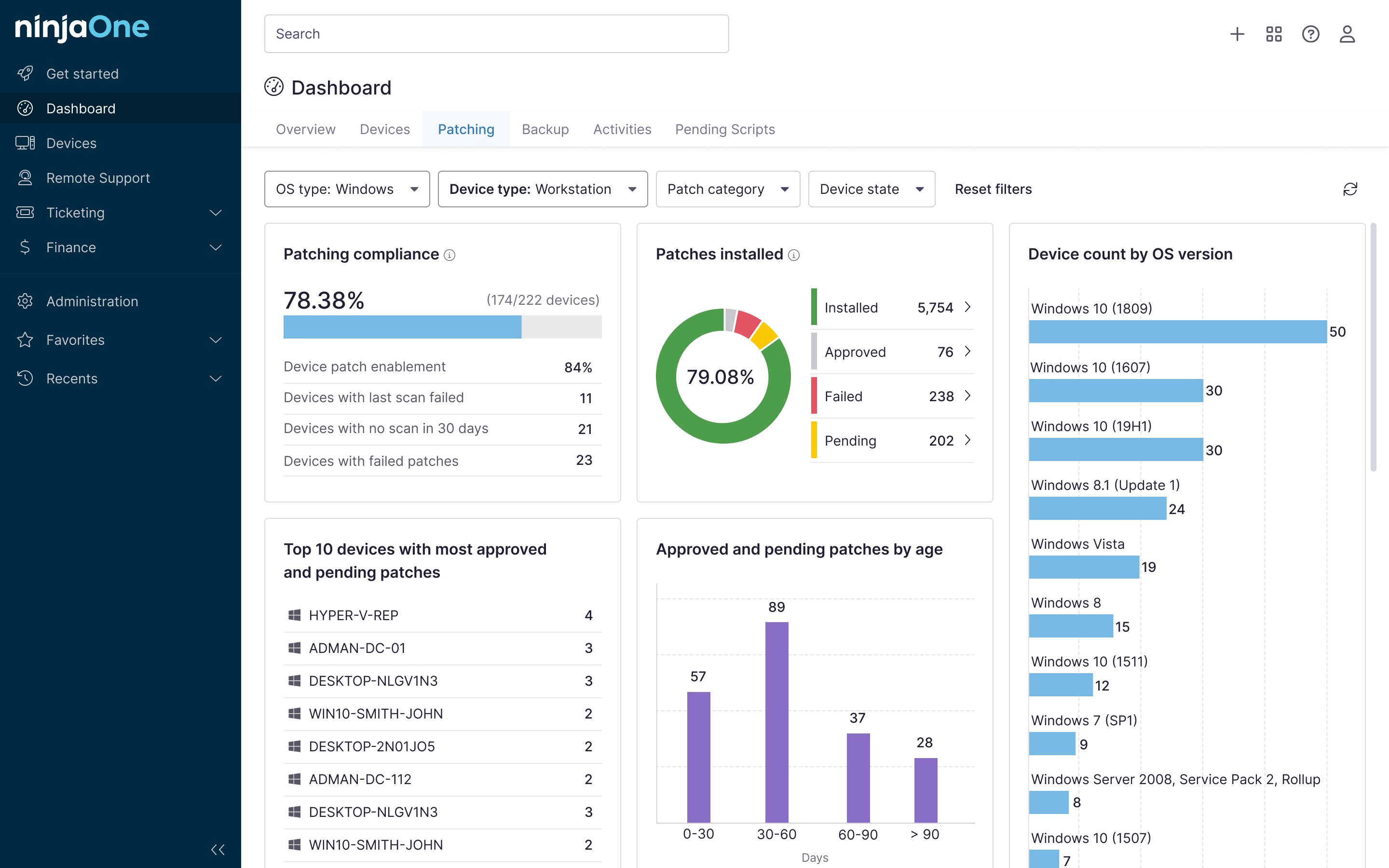In the ever-evolving landscape of network security, the challenges faced by Managed Service Providers (MSPs) and technical managers are multifaceted, and the need for robust security measures becomes paramount. Amidst this backdrop, network segmentation remains a pivotal strategy. This article delves into the intricacies of network segmentation, its significance, and a roadmap to its successful implementation.
What is network segmentation?
At its core, network segmentation is an umbrella term for the practice of dividing a computer network into subnetworks, each being a network segment or fully-fledged network. Imagine a bustling city divided into various districts, each with its own governance and security protocols. Another instructive analogy is to compare the functionality and traffic flow of more “open” suburbs to that of gated communities, or perhaps those suburbs with only one or two routes of ingress and egress, for easier policing.
The analogy holds surprisingly well when you view other network segmentation techniques like VLANs and VPNs as public transport connecting distant neighborhoods and business districts. Similarly, network segmentation can both break down a larger, interconnected network into smaller, isolated segments, and they serve to connect and unite physically and/or logically disparate networks. This ensures that even if one segment faces a security breach or catastrophe, the others remain unaffected. By segmenting networks and following network management best practices, businesses are able to streamline their network management processes to make them faster, simpler, and more effective.
Why is network segmentation important?
In today’s complex cybersecurity landscape, network segmentation is not just a best practice—it’s a necessity. For MSPs and technical managers, the stakes are high. A single breach can compromise an entire network, but segmentation acts as a safeguard, isolating incidents and minimizing damage. Beyond security, it offers operational efficiencies critical to managing multiple clients and services. From enhancing Quality of Service (QoS) to enabling virtual network containerization for ISPs and virtual corporations, segmentation is a versatile tool in your cybersecurity arsenal.
Types of network segmentation
While network segmentation can be broadly categorized into physical and logical segmentation, more detail about the various types of segmentation can be found in the next section (“Network Segmentation Benefits”).
- Physical segmentation: This involves separating networks using physical equipment, such as switches and routers. It’s akin to building physical walls in a structure.
- Logical segmentation: Here, networks are divided using software tools or configurations, like VLANs. It’s more flexible and can be tailored to specific organizational needs.
Network segmentation benefits
While the primary advantage of network segmentation is obviously enhanced security, it offers a plethora of other benefits. The main use cases of network segmentation are:
- Optimized network performance: Enhances overall network performance by reducing unnecessary traffic between segments.
- Reduced congestion: Segmentation can alleviate network congestion, ensuring smoother operations.
- Compliance adherence: For businesses that need to adhere to regulatory standards, segmentation can help in achieving and maintaining compliance.
Additional benefits
Network segmentation is a multifaceted strategy with numerous benefits, as befits a technology which leverages network effects – some more intuitive than others. To delve deeper into the importance of each network segmentation approach in the context of MSPs and technical business management, let’s examine it through the lens of the segmentation-relevant TCP/IP technologies’ main subnetting advantages:
Subnetting
- Security: By dividing a network into smaller subnets, security breaches can be contained within a specific subnet, preventing them from affecting the entire network.
- Efficiency: Subnetting can reduce network traffic, ensuring that local traffic stays local, which can speed up the network.
- Organization: For MSPs managing multiple clients or departments, subnetting can help logically separate and organize network resources and ensure compliance based on business units or functions.
VLANs (Virtual Local Area Networks)
- Flexibility: VLANs allow for logical grouping of network devices, regardless of physical location. Especially useful for MSPs who manage geographically dispersed clients.
- Quality of Service (QoS) Management: VLANs can prioritize certain types of traffic over others, ensuring optimal performance for critical applications.
- Virtual Network Containerization: For ISPs and MSPs, VLANs can be used to create virtual network containers, ensuring each client or tenant has its own segmented network space.
- Virtual Corporations: Companies that operate primarily online can use VLANs to create virtual departments or teams, ensuring resources are allocated efficiently.
VPNs (Virtual Private Networks)
- Secure Remote Access: VPNs provide a secure tunnel for remote workers or offices to access the main network.
- Data Encryption: All data transmitted over a VPN is encrypted, ensuring it remains confidential and secure from potential eavesdroppers.
- Cost-Efficiency: For MSPs, VPNs can be a cost-effective solution to connect multiple offices or provide remote access without the need for dedicated lines. VPNs also provide MSPs’ customers with additional remote access for distributed network segmentation configurations.
Firewalls
- Granular Security: Firewalls offer a high level of control over incoming and outgoing traffic, allowing for detailed security policies and protocol/application-based segmentation as below.
- DMZ Creation: Firewalls can be used to create demilitarized zones, isolating public-facing servers from the internal network.
- Traffic Monitoring: Modern firewalls can monitor traffic for suspicious patterns, offering an additional layer of security.
Access Control Lists (ACLs)
- Fine-Grained Control: ACLs provide detailed control over which devices or users can access specific network resources. Exceptionally useful for multi-tenancy/MSP scenarios.
- Scalability: For large MSPs, ACLs can be used to manage access for thousands of devices or users.
- Efficiency: By restricting unnecessary access, ACLs can reduce network congestion and improve performance.
Protocol-based segmentation
- Optimized Traffic: By segmenting based on protocols, networks can be optimized for specific types of traffic, such as VoIP, video streaming, or low-latency services such as financial trading or gaming servers.
- Security: Certain protocols may be more vulnerable to attacks. By isolating them, the overall network security can be enhanced. Honeypot and ICE security countermeasures, for instance, depend on a plethora of TCP/IP segmentation features.
- Resource Allocation: Resources can be allocated based on the protocols they support, ensuring efficient use and optimal routing.
Application-aware segmentation
- Granular Control: This approach allows for segmentation based on specific applications, ensuring they receive the resources they need.
- Optimized Performance: By understanding application needs, the network can be optimized for performance.
- Security: By isolating applications, vulnerabilities in one app won’t affect others. This is extremely helpful in CI/CD testing.
Each network segmentation approach offers its own set of benefits, especially in the context of MSPs and technical management. The choice of approach will ultimately depend on the specific needs, challenges, and opportunities faced by the organization.
Strengthen your network security and control traffic with strategic segmentation. Watch network segmentation definition and key benefits to learn how it protects and optimizes your infrastructure.
Steps to implement a network segmentation strategy
- Evaluate the Existing Network: Begin by understanding the current network structure, identifying critical assets, and assessing potential vulnerabilities.
- Design a Tailored Segmentation Plan: Based on the evaluation, design a segmentation strategy that aligns with the organization’s needs.
- Integrate Monitoring Tools: Integrate tools that monitor traffic and detect anomalies in real-time — immediately after segmentation, if impossible to integrate during deployment phase.
- Conduct Regular Audits: Periodically review and audit the segmented network to ensure its efficacy and make necessary adjustments.
- Staff Training: Ensure that the staff is well-trained and aware of the segmentation protocols. Regularly update them on any changes or new rules.
For a visual guide on key benefits and implementation best practices, watch our video: Network Segmentation Best Practices.
Protect your business with network segmentation
In the modern digital era, where cyber threats loom large, network segmentation stands out as a beacon of hope for online business. It not only fortifies security but also optimizes network performance. As we navigate the complexities of network security, it’s imperative for businesses and organizations to recognize the pivotal role of network segmentation and integrate it into their security strategy.








